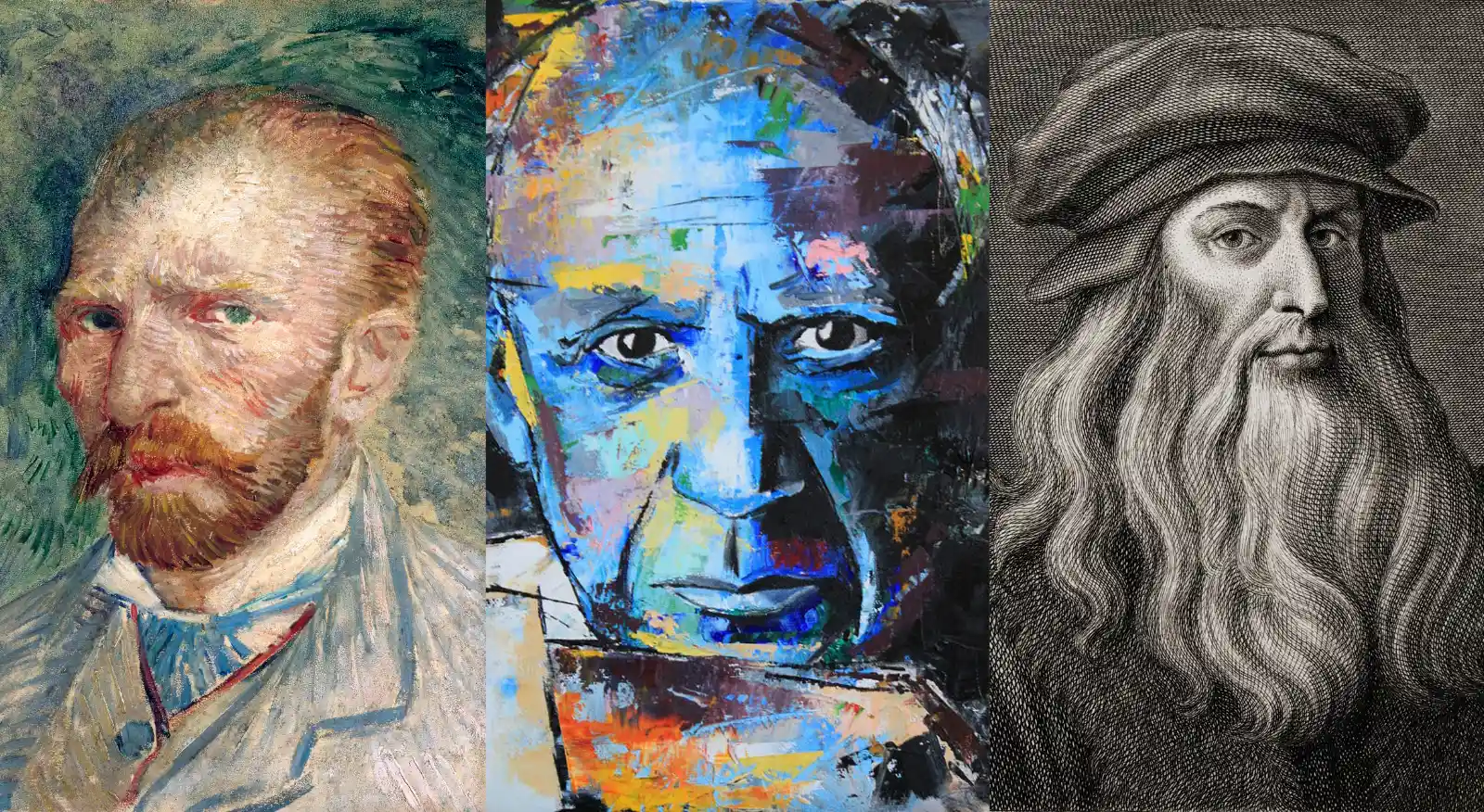
Inspiring Stories of Famous Artists Who Started as Beginners
Art is a journey, not a destination. Many of the world’s most celebrated artists began as complete beginners—some struggled with poverty, mental health, or late starts, yet their perseverance led to timeless masterpieces. These stories prove that talent grows with practice, and success has no deadline.
Here are some of the most inspiring artists who started from scratch and changed the art world forever.
1. Vincent van Gogh – The Late Bloomer Who Redefined Art
Vincent van Gogh didn’t start painting seriously until his late 20s. Before that, he worked as an art dealer, teacher, and even attempted to become a pastor. His early drawings were rough, and critics dismissed his work.
Yet, in just 10 years, he created over 2,100 artworks, including The Starry Night and Sunflowers. Despite selling only one painting in his lifetime, his posthumous fame made him one of history’s greatest artists.
Lesson: It’s never too late to start. Persistence matters more than early success.
2. Leonardo da Vinci – The Self-Taught Genius Who Failed Often
Leonardo da Vinci had no formal education in art. He was self-taught, constantly experimenting (and failing) with new techniques. Many of his works, like The Adoration of the Magi, were left unfinished because he was never satisfied.
He even painted dead criminals for income before finally gaining recognition. His relentless curiosity led to masterpieces like Mona Lisa and The Last Supper.
Lesson: Perfectionism can be paralyzing—progress matters more.
3. Henri Matisse – The Lawyer Who Discovered Art by Accident
Matisse was studying law when a severe illness forced him to rest. His mother gave him paint supplies to pass the time—and he never looked back.
Starting at age 20, he struggled financially for years. Critics mocked his bold colors, calling his style “wild” (Fauvism). Yet, he persisted, creating iconic works like The Dance and pioneering paper cut-outs in his 70s.
Lesson: Sometimes, the best beginnings happen by chance.
4. Paul Gauguin – The Stockbroker Who Quit Everything for Art
Gauguin was a successful stockbroker before abandoning his career at 34 to paint full-time. His family struggled financially, and his wife left him.
Yet, his bold, primitive style (inspired by Tahiti) influenced modern art. Where Do We Come From? What Are We? Where Are We Going? remains one of his most profound works.
Lesson: It’s okay to change paths—even if it means starting over.
5. Grandma Moses – The Farmer Who Became a Painter at 78
Anna Mary Robertson Moses, known as Grandma Moses, began painting in her late 70s after arthritis made embroidery difficult. With no formal training, her folk-art style charmed America.
By her 80s, she was a celebrity, appearing on magazine covers and meeting presidents. Her story proves creativity has no age limit.
Lesson: Your best work might still be ahead of you.
6. Pablo Picasso – The Prodigy Who Still Had to Learn
Picasso could draw before he could talk, but even he struggled early on. He moved to Paris with no money, burning sketches to stay warm. His Blue Period reflected his depression.
Yet, he kept experimenting, leading to Cubism (Les Demoiselles d’Avignon) and global fame. His secret? “It took me four years to paint like Raphael, but a lifetime to paint like a child.”
Lesson: Even geniuses must evolve.
7. Yayoi Kusama – The Artist Who Painted Through Mental Illness
Kusama began drawing as a child to cope with hallucinations. She moved to New York with little money, sleeping in her studio. Critics ignored her at first.
Today, her infinity rooms and polka dots make her one of the most influential living artists. She once said, “I fight pain, anxiety, and fear every day, and the only method I have found that relieves my illness is to keep creating art.”
Lesson: Art can be healing, even in darkness.
8. Claude Monet – The Rebel Who Was Called “Unfinished”
Early critics mocked Monet’s loose brushstrokes, calling his work “unfinished”. He lived in poverty, sometimes destroying paintings out of frustration.
Yet, he pioneered Impressionism (Water Lilies, Impression, Sunrise). His persistence redefined art forever.
Lesson: Innovation often faces rejection first.
